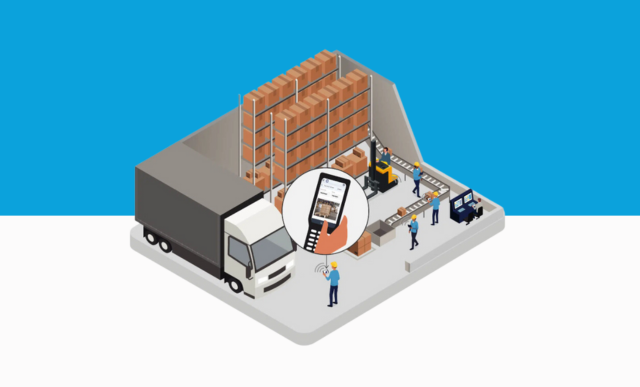Bob’s Discount Furniture Grows from 40 to 120+ Stores with Improved Warehouse Management

Warehouse managers leverage SAP Extended Warehouse Management to integrate with SAP ECC and scale with the business
by Pierce Owen, VP of Research and Publishing, SAPinsider
Most (59%) leading SAP supply chain customers — companies achieving significantly better supply chain business results than the competition — currently use a warehouse management system (WMS) to manage warehouse operations, according to SAPinsider’s Transforming the Intelligent Supply Chain research.
SAPinsider recently interviewed Irene Valentine, Director of Applications and Development at Bob’s Discount Furniture. Valentine managed and implemented SAP Extended Warehouse Management (EWM) for five distribution centers across the continental United States.
This research brief shares the story of how and why Bob’s Discount Furniture implemented and leveraged SAP EWM to support its growth.
Lack of Scalability Leads to a Change
Bob’s Discount Furniture first deployed SAP ECC in 2010 but still used a non-SAP solution for warehouse management. JDA acquired the developer of Bob’s legacy WMS and phased out support for the installation. Although JDA marketed a replacement solution to Bob’s, Bob’s management worried that the solution would not scale.
Valentine shared, “Our legacy system did not integrate with SAP ECC, which led to siloed data.” Users of the system would make changes in the legacy WMS but not SAP ECC. “Inventory reconciliation was always a nightmare. There was only one truth to the story, but we had to work to get to that truth.”
Warehouse Management on SAP EWM Empowered Bob’s to Scale
When Bob’s Discount Furniture started implementing SAP EWM in 2012, it had two distribution centers supporting forty stores. Bob’s took the opportunity to train the warehouse business teams to control the master data going into SAP EWM rather than the IT team. The warehouse team could then make all decisions for day-to-day operations and control the data in SAP EWM by themselves, only requiring support from IT.
SAP EWM provided levels of visibility, integration, and automation beyond Bob’s legacy WMS. Once programmed and updated with a day’s orders, SAP EWM can automate and orchestrate the movements of products wherever needed. To double check the programming, SAP EWM offers simulation capabilities.
Ultimately, this empowers customers such as Bob’s to orchestrate the path that the products take so that all products come together at the right dock and the right time.
SAP EWM integrated deeply with Bob’s instance of SAP ECC, meaning warehouse business users could make all their changes directly in SAP EWM, and it would sync up with SAP ECC.
In 2014, Bain Capital recognized Bob’s growth potential and acquired the company. Since implementing SAP EWM, Bob’s Discount Furniture has grown from 40 stores to 120 stores with more slated to open this year and from two distribution centers to five distribution centers. “SAP EWM empowered this growth. The only reason we have been able to grow is because the solution is scalable,” concluded Valentine.
What Does This Mean for SAPinsiders?
Based on our research and the interview with Irene Valentine, the following considerations can help SAP customers improve warehouse management:
- Choose a scalable WMS. Valentine credited SAP EWM with accelerating the growth of Bob’s Discount Furniture. Well managed warehouses and low inventory costs with high product availability and fast order fulfillment made Bob’s business model possible. The scalability of SAP EWM meant that higher volumes of transactions would not slow down Bob’s operations.
- Educate warehouse business teams to empower them to manage both day-to-day operations and control their master data. This streamlined both operational and IT workflows for Bob’s. Again, and again, in a wide variety of cases, SAPinsider has written about success stories where operational teams took control of their own data. Campbell’s Soup, Arla Foods, Stemcell Technologies, and Johns Hopkins all identified this as a key to success.
- Ensure the WMS integrates deeply with the ERP. Lack of integration led to errors and extra work in inventory reconciliation for Bob’s. Business users should only have to worry about recording changes and transactions once and know that the core ERP will reflect their systems.
Following this strategic guidance should help SAP customers get the most out of their WMS in a way that meets their business needs. Make sure to download and read the full report, “Transforming the Intelligent Supply chain,” available for free for SAP customers and the general population.





